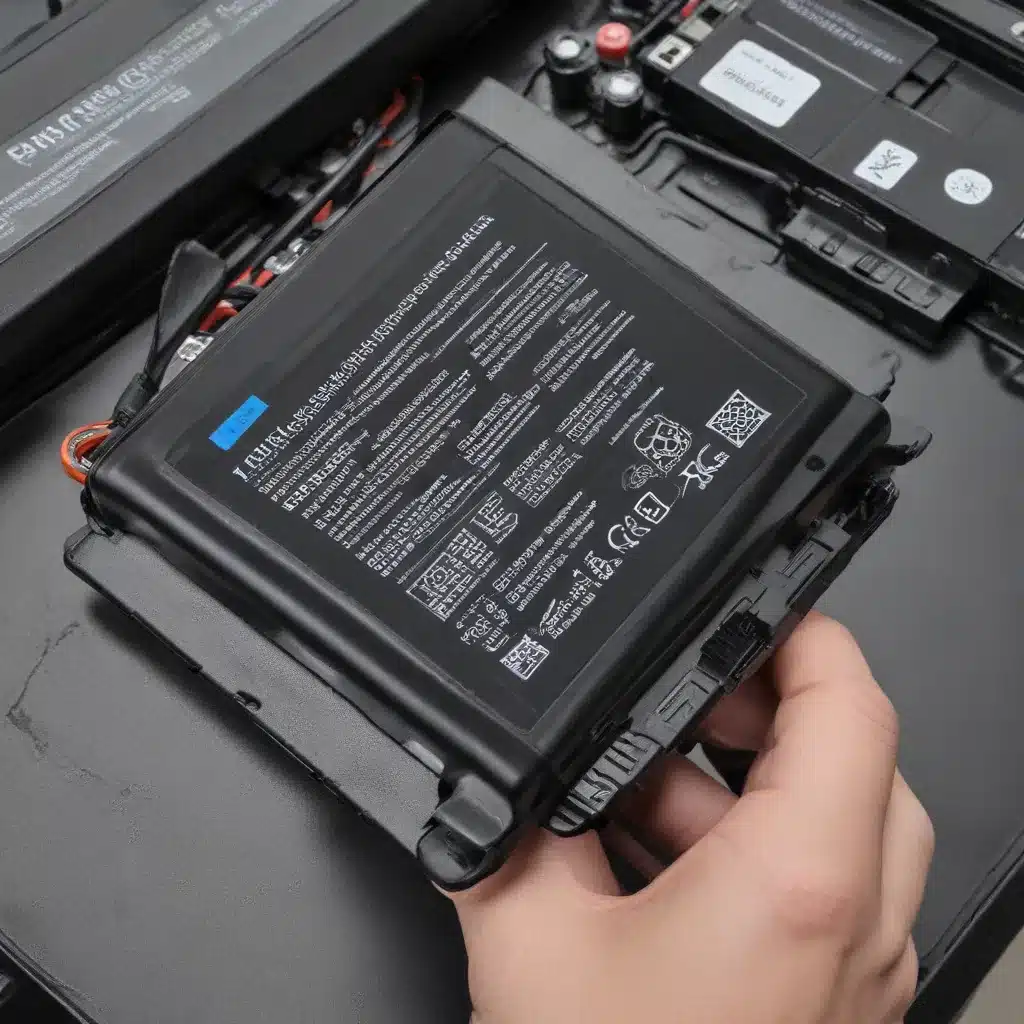
Laptop Hardware
Laptop Battery Packs
Laptop batteries are an essential component that often get overlooked until they start causing problems. As a trusted IT consultant, I’ve seen my fair share of battery-related issues over the years. In this comprehensive guide, we’ll explore the ins and outs of laptop battery packs – from the different types and their lifespan to the process of safely replacing a worn-out or failing battery.
Battery Types:
Laptops typically use one of two main battery technologies – Lithium-Ion (Li-Ion) or Lithium-Polymer (Li-Po). Li-Ion batteries are the more common and affordable option, while Li-Po batteries offer slightly higher energy density and are found in premium laptops. Both types have their own unique characteristics and considerations when it comes to usage and replacement.
Battery Life and Capacity:
The lifespan of a laptop battery can vary greatly depending on factors like usage patterns, charging habits, and environmental conditions. On average, you can expect a laptop battery to last 2-4 years before needing replacement, although some may degrade faster. Battery capacity, measured in watt-hours (Wh) or milliamp-hours (mAh), also diminishes over time, resulting in shorter runtimes on a single charge.
Laptop Components
While the battery is a crucial part, it’s important to understand the other key components that make up a laptop. The motherboard, processor, RAM, and storage devices all play a vital role in the overall performance and functionality of the machine.
Maintaining a good understanding of these internal components can help you troubleshoot issues, identify potential bottlenecks, and make informed decisions when it comes to upgrading or repairing your laptop.
Laptop Maintenance
Identifying Battery Issues
Battery Wear and Degradation:
As laptop batteries age, they naturally experience wear and degradation, leading to a gradual decline in their ability to hold a charge. This is a normal phenomenon and doesn’t necessarily indicate a complete battery failure. However, it’s important to monitor the battery’s health and replace it when necessary to avoid unexpected shutdowns or reduced runtime.
Battery Failure Symptoms:
If your laptop’s battery is failing, you may notice several telltale signs, such as:
– Rapid battery drain, even when fully charged
– Sudden unexpected shutdowns or restarts
– Inability to hold a charge for more than a few minutes
– Error messages or warnings from the operating system about battery issues
Battery Replacement Process
Purchasing Replacement Batteries:
When it’s time to replace a worn-out or failing battery, it’s crucial to source a genuine, compatible replacement from a reputable supplier. Avoid cheap, off-brand batteries, as they may not meet the manufacturer’s specifications and could potentially cause further issues.
Safely Removing and Installing Batteries:
Replacing a laptop battery requires some care and attention. Before attempting any work, ensure that the device is powered off and unplugged from the power source. Refer to your laptop’s user manual or the manufacturer’s instructions for the specific steps to remove and install the battery safely.
Power Management
Battery Charging and Discharging
Battery Charging Modes:
Most modern laptops offer different battery charging modes, such as “Balanced,” “Optimized,” or “Rapid Charge.” These modes can affect the charging speed, battery lifespan, and overall power management. It’s generally recommended to use the “Balanced” or “Optimized” mode for everyday use to strike a balance between performance and battery longevity.
Battery Discharge Cycles:
Laptop batteries perform best when they are regularly discharged and recharged. Avoid letting the battery drain completely to 0% too often, as this can have a negative impact on the battery’s health over time. Aim to keep the battery within the 20-80% range whenever possible.
Power Optimization Techniques
Battery Saving Settings:
Adjusting your laptop’s power settings can have a significant impact on battery life. Enable features like automatic screen brightness adjustment, power-saving modes, and disabling unused peripherals to maximize your battery’s runtime.
Extending Battery Lifespan:
To prolong the lifespan of your laptop’s battery, consider the following tips:
– Avoid exposing the battery to extreme temperatures (hot or cold)
– Unplug the laptop when it’s not in use and running on battery power
– Perform occasional full discharge and recharge cycles
– Store the laptop in a cool, dry place when not in use
Troubleshooting and Diagnostics
Laptop Diagnostics
Hardware Monitoring Tools:
Utilize system monitoring tools, such as HWMonitor or CPU-Z, to keep an eye on your laptop’s hardware health, including the battery’s status, temperature, and wear level. These tools can provide valuable insights into the overall condition of your device.
Battery Health Checks:
Many laptop manufacturers offer built-in battery health diagnostic tools, either through the BIOS or a dedicated utility. These tools can help you assess the current condition of your battery and determine if it needs replacement.
Troubleshooting Battery Problems
Isolating Battery Issues:
When dealing with battery-related problems, it’s essential to rule out other potential causes, such as software conflicts, driver issues, or hardware malfunctions. Start by troubleshooting the battery itself, and then move on to other system components if necessary.
Troubleshooting Steps:
If you’re experiencing battery issues, try the following troubleshooting steps:
1. Check the battery’s physical condition for any signs of damage or swelling.
2. Ensure that the battery is properly seated and making good contact with the laptop.
3. Update your laptop’s BIOS and drivers to the latest versions.
4. Run the manufacturer’s battery diagnostic tools to assess the battery’s health.
5. If the battery is beyond its useful lifespan, consider purchasing a replacement.
Remember, when it comes to laptop maintenance and troubleshooting, it’s always best to refer to the manufacturer’s guidelines and seek professional assistance if you’re unsure about any of the procedures. Proper care and maintenance can help extend the life of your laptop and ensure a smooth computing experience.
For more information on computer repair and IT solutions, be sure to visit our website at https://itfix.org.uk/computer-repair/.












